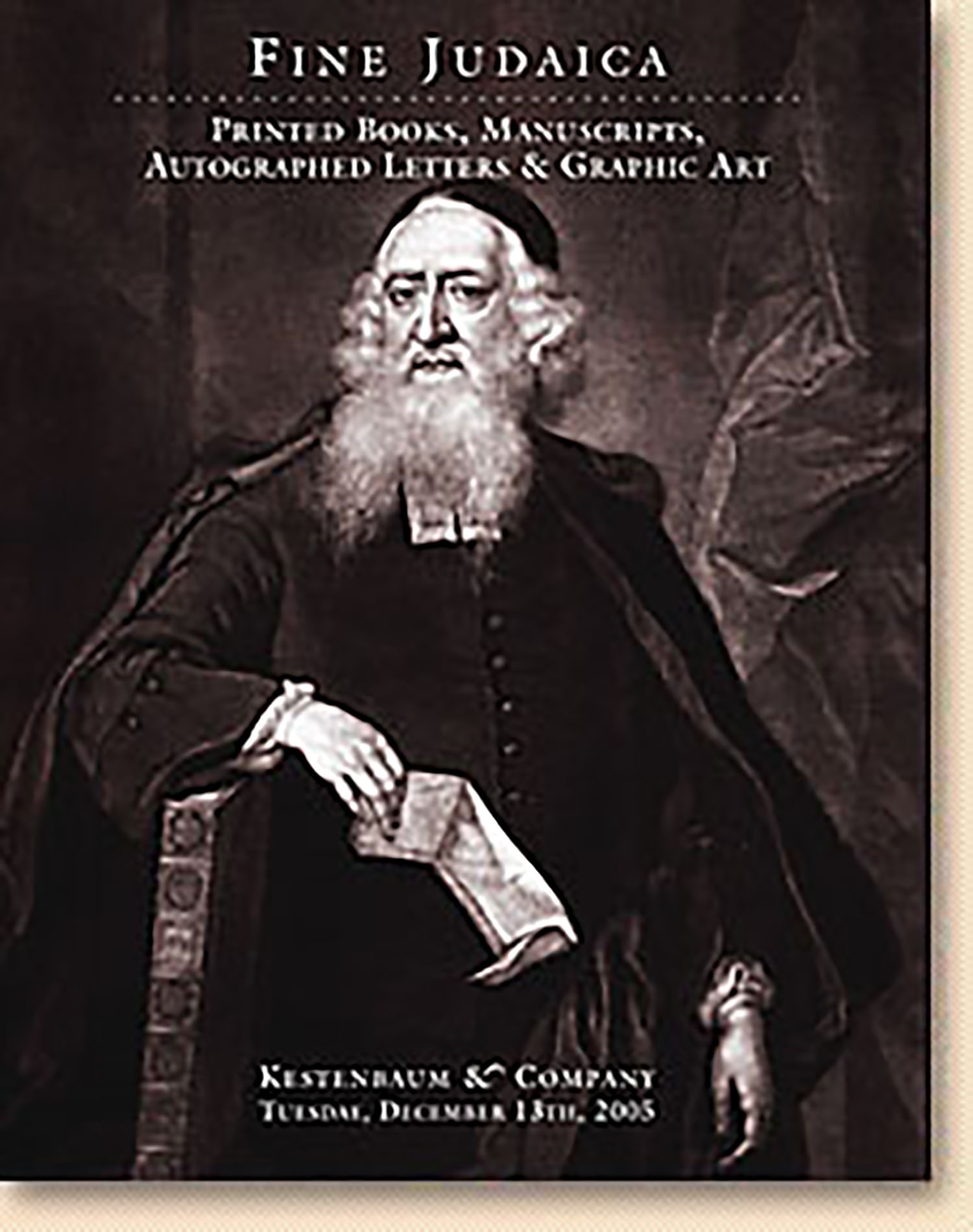Palgei Mayim [“Waves of Water”: Halachic controversy concerning the Mikveh in Rovigo]

AUCTION 31 |
Tuesday, December 13th,
2005 at 1:00
Fine Judaica: Hebrew and Other Printed Books
Lot 267
PORTO, MOSES COHEN
Palgei Mayim [“Waves of Water”: Halachic controversy concerning the Mikveh in Rovigo]
Venice: Giovanni di Gara 1608
Est: $1,500 - $2,000
PRICE REALIZED $2,800
Rare variant of a Polemic concerning the mikveh in Rovigo, Italy.
The present work is a polemic against Mashbith Milchamoth, a compilation of rulings in favor of the Mikvah arrangement in Rovigo. Palgei Mayim contains rulings opposing the use of the Mikveh, by major Italian authorities such as R. Ezra of Fano, R. Moses Menachem Rapo, and R. Moses Cohen Porto, as well as the only published halachic responsum of R. Moses Mordecai Margalioth of Cracow (the predecessor of R. Joel Sirkes, author of Bayith Chadash).
The book was published with variant paginations. The Kestenbaum Sale of February 8th, 2005, Lot 191, offered a copy of Palgei Mayim with the pagination Ya'ari attributes to most copies: ff.78, 14, 4. The pagination of the present copy however, with its nine additional leaves, is most rare. These additional leaves contain “Kitzur Palgei Mayim” (ff. 5-10), a digest of the contents of the book; “Shemoth ha-Chachamim ha-Chathumim ba-Pesakim” (unfoliated), a roster of the sages signed on the decisions; and finally, “Lu'ach ha-Ta'uyoth” (ff.1-2), corrigenda. SeeYaari, p. 422, n. 2.
Even rarer is an epistle entitled “Magen u-machaseh u-mistor ve-hithnatzluth” which Yaari discovered in but two copies of Palgei Mayim. This highly confidential letter, intended for the select few, reveals fascinating details surrounding the Rovigo controversy. At stake was not only the permissibility of the ritual bath, but also the permissibility of drinking non-Jewish wine, in which regard Italian Jewry was notoriously lax. See Yaari, pp. 423-429; H. Soloveitchik, Principles and Pressures: Jewish Trade in Gentile Wine in the Middle Ages (Hebrew: “Yeinam”) (Tel Aviv, 2003)
